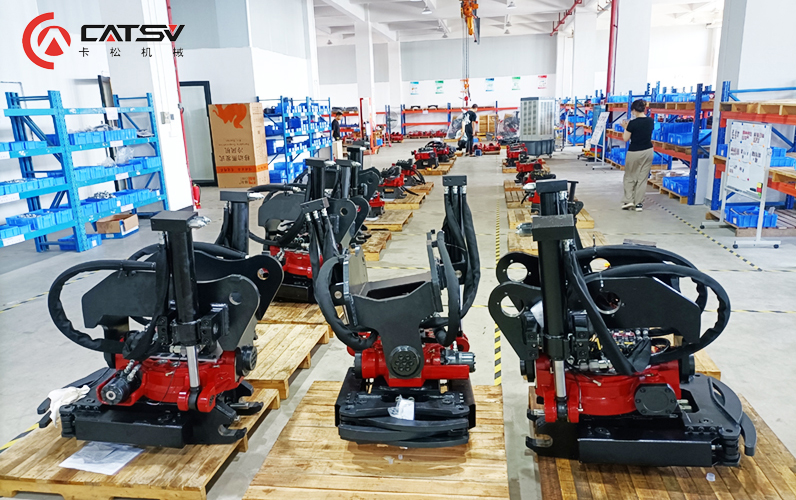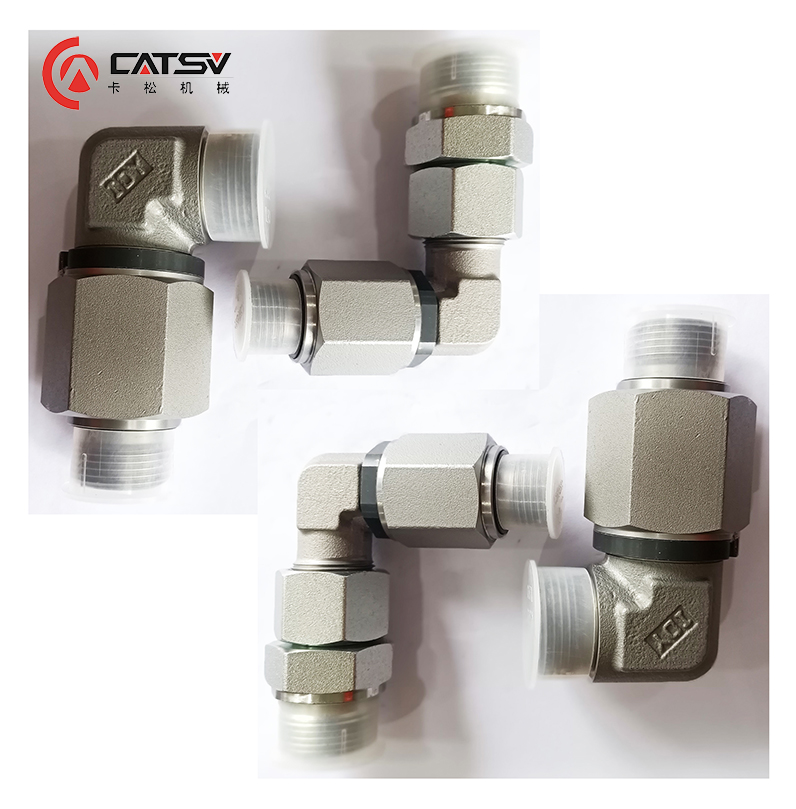In today's engineering and construction fields, hydraulic systems are an indispensable means of power transmission, and hydraulic fitting as the core component of the system, play a key role in connecting and providing seals.
Whether you are an engineer, mechanic, or someone interested in hydraulic technology, this blog will provide you with an in-depth look at how to choose the right Hydraulic Fitting to match the CATSU Tiltrotator to ensure that the Hydraulic system and the CATSU Tilt Rotator not only work together, but also bring greater productivity and operational flexibility to your engineering projects.
What is the CATSU Tilt Rotator?
The CATSU Tilt Rotator is an innovative attachment for construction machinery that offers exceptional functionality and applications. Its primary purpose is to enable rotation and tilting on various mechanical equipment, providing operators with increased mechanical flexibility. Whether it's excavating, loading and unloading materials, or performing construction tasks, the CATSU Tilt Rotator allows for 360-degree rotation and 45-degree tilting, enhancing precision and efficiency in operations.
In terms of improving mechanical flexibility and productivity, the CATSU Tilt Rotator plays an indispensable role. It not only helps operators execute more actions within confined spaces but also reduces the need for frequent machine repositioning, saving time and costs. This attachment finds wide applications across a range of mechanical equipment, such as excavators, loaders, and bulldozers. Whether on large construction sites or in tight spaces, the CATSU Tilt Rotator adds flexibility and efficiency to mechanical equipment.

What are hydraulic fittings?
If you're new to the world of hydraulics, let's simplify the concept of a fitting. In essence, hydraulic fittings serve as the essential connectors that join hoses and pipes to other critical system components such as tools, valves, and pumps. For those utilizing Enerpac hydraulic tools, it's essential to be acquainted with the following commonly encountered types:
Quick links
- Snap-Action Couplers
- Push-to-Connect Couplers
- Threaded Quick Links
- Ball-Lock Couplers
- Flat-Face Couplers
- High-Flow Quick Links

What makes a good hydraulic fitting?
Fundamentally, an effective hydraulic fitting is one that suits the specific application requirements. This entails selecting the appropriate pressure rating, material composition, diameter, thread/connection style, and dimensions.
A fitting should be user-friendly in terms of installation and removal, devoid of the need for specialized tools or excessive force. When opting for a coupler, especially if the primary focus is achieving swift connections with minimal oil leakage, considering investing a bit more for a flat-face push-fit coupler might prove advantageous. Moreover, if the chosen coupler doesn't include a protective dust cap, it's advisable to procure one-this is particularly crucial when operating in rugged, industrial or construction environments.
What makes hydraulic fittings and couplers fail?
Hydraulic fittings and couplers can experience failure due to various factors that impact their performance and integrity. Some common reasons for hydraulic fittings and couplers failure include:
Incorrect Installation: Improper installation, such as overtightening, inadequate torque, or improper alignment, can lead to leaks, reduced sealing effectiveness, and premature failure.
Corrosion and Contamination: Exposure to moisture, chemicals, and contaminants in the hydraulic fluid can cause corrosion and wear on the fitting surfaces, leading to leaks and reduced functionality.
Material Compatibility: Using incompatible materials for fittings and couplers with the hydraulic fluid can result in chemical reactions, deterioration, and eventual failure.
Pressure Surges: Rapid changes in hydraulic pressure, commonly caused by sudden starts, stops, or valve adjustments, can create stress and fatigue on fittings, leading to cracks and leaks.
Vibration and Mechanical Stress: Continuous vibration and mechanical stress from the equipment or machinery can weaken fittings over time, causing them to loosen, crack, or fail.
Temperature Extremes: Extreme temperature fluctuations can cause expansion and contraction of materials, affecting the tightness of connections and potentially leading to leaks.
Wear and Tear: Continuous use and operation can lead to wear and tear on the sealing surfaces, reducing their effectiveness and potentially causing leaks.
Overloading: Exceeding the pressure or load capacity of fittings and couplers can lead to deformation, cracking, or catastrophic failure.
Inadequate Maintenance: Insufficient maintenance, including neglecting regular inspections and replacements, can allow minor issues to escalate into major failures.
Poor Quality: Low-quality or counterfeit fittings and couplers may not meet industry standards, leading to compromised performance and early failure.
How to match the CATSU tilt rotator when selecting the right hydraulic fitting?
Listed below are five key considerations.
Choosing the Right hydraulic fittings Type
When connecting the CATSU Tilt Rotator to a hydraulic system, selecting the appropriate type of hydraulic fittings is crucial. hydraulic fittings come in various types, including threaded connections, flange connections, and pin connections, among others. Each type of fitting has its suitable scenarios and advantages. When selecting a fitting type, it's essential to consider compatibility with the CATSU Tilt Rotator to ensure seamless collaboration.
Determining Size and Specifications
Selecting the correct size and specifications of hydraulic fittings is pivotal for the proper functioning of the CATSU Tilt Rotator. Mismatched sizes could lead to loose connections or leakage, affecting system performance. Methods for measuring and confirming the required fitting dimensions can guarantee compatibility between the fittings and the CATSU Tilt Rotator, thereby ensuring system stability.
Considering Working Pressure and Flow Requirements
In the process of choosing hydraulic fittings, working pressure and flow requirements are critical factors. The working pressure and flow demands of the hydraulic system directly influence the choice of fittings. Ensuring that the fittings can handle the system's working pressure and flow is essential to ensure compatibility with the CATSU Tilt Rotator.
Material and Environmental Adaptability
Explaining the impact of choosing the right material for hydraulic fittings on performance and durability.
Discussing the adaptability of fitting materials and coatings when combined with the CATSU Tilt Rotator to ensure long-term use.
Sealing Performance and Leak-Prevention Design
Highlighting the importance of considering the sealing performance when selecting hydraulic fittings to ensure a leak-free system.
Emphasizing the significance of selecting appropriate sealing materials and designs that align perfectly with the CATSU Tilt Rotator.
Where to Buy Hydraulic Fittings and tilt rorators?
If you are looking for Excavator Attachments to use with CATSU tools, you can purchase them directly from CATSU online at www.catsutiltrotator.com.
Conclusion
In summary, a good hydraulic fitting is tailored to a specific application, with key factors including operating pressure, thread/connector suitability, flow rate and material compatibility. If you choose fittings and tilt rotators from the same manufacturer or dealer that purchased your hydraulic tools, it should be easier than shopping around.
Most importantly, to ensure safety, you must install and remove the fittings correctly, which means using the specified torque for threaded fittings, and be sure to decompress the system before removing any couplers or fittings.
